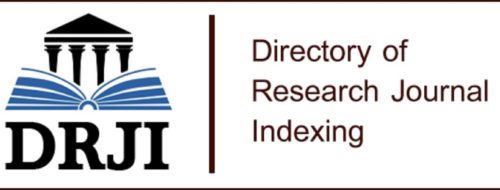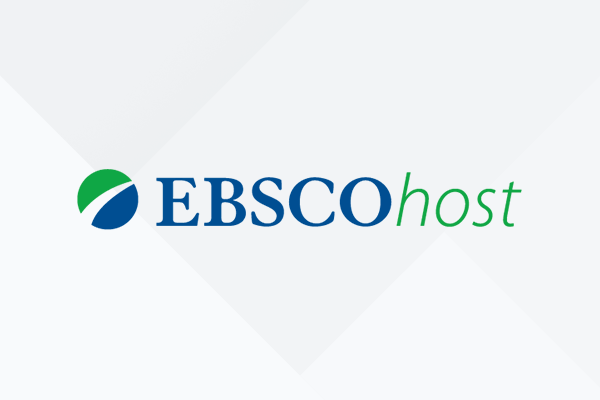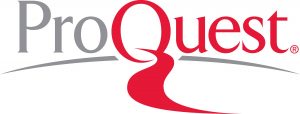Öz
Bu araştırmanın amacı, Chen vd. (2014) tarafından geliştirilen “Yeşil Öz Yeterlilik Ölçeği”nin Türkçeye uyarlanmasıdır. Öncelikle orijinal ölçeği geliştiren yazarlardan elektronik ortamda izin alma işlemleri gerçekleştirilmiştir. Daha sonra ölçek araştırmacı tarafından Türkçeye çevrilmiş ve çeviri hakkında uzman görüşleri alınmıştır. Dil ve anlam bakımından eşdeğerliliği sağlanan ölçek Türkiye genelinde farklı sektörlerde faaliyet gösteren 207 çalışana uygulanmıştır. Hedef kitleden elde edilen veriler için yapılan açımlayıcı faktör analizi sonucunda ölçekte bulunan altı maddenin tek faktör altında toplandığı ve açıklanan varyans oranının %57,143 olduğu görülmüştür. Uyarlanan ölçeğin faktör yapısının doğruluğunu test etmek için doğrulayıcı faktör analizi yapılmış ve yapılan analiz sonucunda elde edilen değerler; AGFI=,87 GFI=,94 CFI=,96, NFI=,94 RFI=,91 IFI=,96 şeklindedir. İç tutarlılık ve güvenilirlik analizinde Cronbach Alpha kat sayı değeri %84’tür. Elde edilen bu sonuçlara göre anketin güvenilir bir ölçme aracı olduğu sonucuna ulaşılmıştır.
Anahtar Kelimeler
Kaynakça
- Abraham,J.,Pane,M.,& Chairiyani,R. (2015). An investigation on cynicism and environmental self- efficacy as predictors of pro-environmental behavior. Psychology, 6. 234-242. doi:10.4236/psych.2015.63023
- Aeknarajindawat.,& Jermsittiparsert, K. (2019). The mediating impact of green self-efficacy and green mindfulness in the relationship between green shared vision and green creativity among the manufacturing firms in Thai Sports Industry. J. Hum. Sport Exerc. 44. 2262–2275. doi:10.14198/jhse.2019.14.Proc5.43
- Arseven,A., Arseven, İ.,& Tepehan, T. (2015). “Sınıf Öğretmeni Adaylarının Matematik Öğretimine Yönelik Öz-Yeterlik Algılarının İncelenmesi.”Cumhuriyet International Journal of Education 4(2),29-40 doi:10.30703/cije.321367
- Axboe,M,K.,Christensen,K,S., Kofoed,P,E & Ammentorp, J (2016).Development an validation of a self efficacy questionnaire measuring the clinical communication skills of health care professionals BMC Medical Education, 16 (272),1-10. doi :10.1186/s12909-016-0798-7
- Aydın, S. & Tufan, F. (2018). Sürdürülebilirlik ve yeşil kavramları bağlamında y kuşağının satın alma davranışları. Selçuk İletişim, 11(2),397-420.
- Bandura,A. (1982) “Self-efficacy nechanisn in human agency”, Reprinted from American Psychologist, 37 (2). 122-147. doi:10.1037/0003-066X.37.2.1
- Bandura, A. (1986). Fearful expectations and avoidant actions as coeffects of perceived self-inefficacy.
- Bandura, A. (1994). Self efficacy: The exercise of control, New York: W. H. Freeman and Company.
- Bandura,A, & Adams, N, E.(1997) Analysis of self-efficacy theory of behavioral change, Cognitive Therapy and Research, 1(4),287-310.
- Baykul, Y. (2000). Eğitimde ve psikolojide ölçme: Klasik test teorisi ve uygulaması. Ankara: ÖSYM Yayınları.
- Büyüköztürk, Ş. (2002). Araştırma deseni, SPSS uygulamaları ve yorum, Sosyal bilimler için veri analizi el kitabı: İstatistik.Ankara:Pegem Yayıncılık
- Büyüköztürk, Ş., Kılıç-Çakmak,E.,Akgün, Ö., Karadeniz, Ş., ve Demirel, F. (2010). Bilimsel araştırma yöntemleri. Pegem Yayıncılık
- Carter, W, R., Nesbit, P. L., Badham, R. J., & Parker, S. K.(2018). The effects of employee engagement and self-efficacy on job performance: A longitudinal field study.The International Journal of Human Resource Management, 29(17), 2483-2502.
- Chen, Y., Chang, C., Yeh, S.,& Cheng, H.(2014) Green shared vision and green creativity: The mediation roles of green mindfulness and greenself- efficacy. Qual. Quant. 49, 1169–1184
- Chen, S., Hsiao ,C., Chang,H,C & Chou, C. (2015) Can the entrepreneurship course ımprove the entrepreneurial ıntentions of students? Int. Entrep. Manag. Journal 11,557–569.
- Çokluk, Ö.,Şekercioğlu, G.,& Büyüköztürk, Ş. (2012). Sosyal bilimler için çok değişkenli istatistik: SPSS ve LISREL uygulamaları. Pegem Akademi.
- Çokluk, Ö., Şekercioğlu, G.,& Büyüköztürk, Ş. (2010). Sosyal bilimler için çok değişkenli istatisik : SPSS ve LISREL Uygulamaları.Pegem Akademi.
- Erkuş, A. (2010). Psikometrik terimlerin Türkçe karşılıklarının anlamları ile yapılan işlemlerin uyuşmazlığı, Eğitimde ve Psikolojide Ölçme ve Değerlendirme Dergisi, 1(2),72-77.
- Ervin, D., Wu, J.,Khanna, M.,Jones., & Wirkkala,T.(2013). Motivations and barriers to corporate environmental management”. Bus. Strategy Environ. 22, 390–409. Field, A.P. (2005). Discovering statistics Using SPSS, London: Sage.
- Gecas,V.(1989). The social psychology of self-efficacy. Annual Review of Sociology 291-236.
- Gholami, R.(2014). Senior managers perception on green information systems (IS) adoption and environmental performance: Results from a field survey. Inf. Manag. 50,431-438.
- Green, S., & Salkind, N. (2005). Factor analyzis using spss for windows and macintosh: analyzing and understanding data.
- Guo, L., Xu, Y., Liu, G., & Wang, T. (2019). Understanding firm performance on green ustainable practices through managers as cribed responsibility and waste management: Green self-efficacy as moderator. Sustainability 11, 4976.
- Güney,S (2020). “Yönetim ve organizasyon el kitabı”. Nobel Yayın Daǧıtım.
- Hsu,C.,Yang,Y,L., & C.,Lin,C.F. (2015). Development of a cloud-based service framework for energy conservation in a sustainable intelligent transportation system. International Journal of Production Economics, 164, 454-461.
- Herrera, R. S., Del Campo, L., & Ames, M. H. (1993). A Serial approach for translating family science instrumentation. Family Relations, Jstore Database. 42, 357- 360.
- Huang, H. (2016). Media use, environmental beliefs, self-efficacy, and pro-environmental behavior. Journal of Business Research, 69(6), 2206-2212.
- Jansson, J. (2010).Green consumer behavior: Determinants of curtailment and eco-innovation adoption. J. Consum. Mark, 27, 358–370.
- Jeong, J.(2004). Analysis of the factor sand the roles of hard in organizational learning styles as ıdentified by key ınformants at selected corporations in the republic of Korea”. (Unpublished Doctoral Dissertation) Texas A&M University, USA.
- Jöreskog, K,G., & Sörbom, D. (1999). Lisrel 8.30 and Prelis 2.30. In: Scientific Software International.
- Kayış, A. (2006) Güvenilirlik analizi, SPSS uygulamalı çok değişkenli istatistik teknikleri.Ş.Kalaycı (ed) Ankara: Asil Yayın Dağıtım.
- Kim,A., Kim,Y., Han,K., Jackson,S., & Ployhart, R, E. (2017). Multi level influences on voluntary workplace green behavior: Individual differences, leader behavior, and coworker advocacy. Journal of Management, 43(5), 1335–1358.
- Kline, R.B. (1998). Principles and practice of structural equation modeling. New York: Guilford Press.
- Liao, Z., Weng, C., Long, S., & Xiao, Z. (2020) Do social ties foster firms’ environmental innovation The moderating effect of resource bricolage. Technol. Anal. Strateg. Manag.33, 476–490.
- Luszczynska, A., Gutierrez D,B., & Schwarzer,R.,(2005).General self efficacy in various domains of human functioning: evidence from five countries”, International Journal of Psychology, 40,(2), 80-89.
- Luszczynska, A., Schwarzer, R., Lippke, S., & Mazurkiewicz, M. (2011). Self-efficacy as a moderator of the planning–behaviour relationship in interventions designed to promote physical activity. Psychology and Health, 26(2), 151-166.
- Meinhold,J., & Malkus.,A.J.(2005).,“Adolescent environmental behaviors: Can knowledge, attitudes, and self-efficacy make a difference. Environ. Behav. 37, 511–532.
- Meydan C., & Şeşen H,(2011). Yapısal Eşitlik Modellemesi AMOS Uygulamaları, Detay Yayıncılık
- Morgil İ., Seçken N., & Yücel N.(2014). “Kimya öğretmen adaylarının öz-yeterlik inançlarının bazı değişkenler açısından incelenmesi, Balıkesir Üniversitesi Fen Bilimleri Enstitüsü Dergisi, 6(1), 62-72.
- Nordlund, A.(2003) “Effects of values, problem awareness, and personal norm on willingness to reduce personal car use”. J. Environ. Psychol. 23,339–347.
- Pajares, F. (2002). Gender and perceived self-efficacy in self-regulated learning. Theory into practice, 41(2), 116-125.
- Savaşır, I. (1994). Ölçek uyarlamasındaki bazı sorunlar ve çözüm yolları. Türk Psikoloji Dergisi , 33 (9), 27-32.
- Scherer, R, F., Wiebe, F. A., Luther, D. C., & Adams, J. S. (1988). Dimensionality of coping: Factor stability using the ways of coping questionnaire. Psychological Reports, 62(3), 763-770.
- Schumacker, R. E., & Lomax, R. G. (2004). A beginner's guide to structural equation modeling. Psychology Press.
- Tabachnick,B,G., & Linda S. Fidell (2013), Using multivariate statistics (Sixth Edition), Pearson Education Limited.
- Tavşancıl E. (2002). Tutumların ölçülmesi ve SPSS ile veri analizi. Ankara: Nobel Akademi.
- Tezbaşaran, A. A. (2004). Likert tipi ölçeklere madde seçmede geleneksel madde analizi tekniklerinin karşılaştırılması. Türk Psikoloji Dergisi, 19(54), 77-89.
- Tölkes, C., & Butzmann, E., (2018) Motivating Pro-sustainable behavior: The potential of green events—A Case-Study from the Munich Street life Festival. Sustainability, 10, 3731. Ulusoy,A.,Güngör,A., Akyol, K,Subaşı,G.,Ünver,G., & Erdamar,G. (2011).Eğitim Psikolojisi.Anı Yayıncılık.
- Ying, M.,Faraz, N. A., Ahmed, F., & Raza, A. (2020). How does servant leadership Foster Employees' voluntary green behavior? A sequential mediation model. International Journal of Environmental Research and Public Health, 17(5), 1792. Zimmerman, B.J.(2000).Self efficacy: An essential motive to learn”, Contemporary Educational Psychology, 25, 82-91.
- Zulkosky, K. (2009). Self-efficacy: A concept analysis, Journal Compilation, Vol. 44,(2),93-102.
Öz
The aim of this research adapt to Turkish the “Green Self Efficacy Scale” which is developed by Chen vd.(2014). Firs of all permission to use the scale was obtained electronically from the autor who
developed the orjinal scale. After than the scale was translated into Turkish by the researcher and expert opinion was taken about the translated scale The scale which equivalence in terms of language and meaning was applied to 207 employees operating in different sectors throughout Turkey. As a result of the exploratory factor analysis for the data obtained from the target population, it was seen that six items in the scale were grouped under a single factor and the explained variance rate was 57,143%. In order to test the accuracy of the factor structure of the adapted scale, confirmatory factor analysis was performed and the values obtained as a result of the analysis were AGFI= ,87 GFI= .94 CFI= .96, NFI =.94 RFI =.91 IFI = .96. In the analysis, the Cronbach Alpha coefficient is 84% and it has been concluded that the scale is a reliable measurement tool.
Anahtar Kelimeler
Kaynakça
- Abraham,J.,Pane,M.,& Chairiyani,R. (2015). An investigation on cynicism and environmental self- efficacy as predictors of pro-environmental behavior. Psychology, 6. 234-242. doi:10.4236/psych.2015.63023
- Aeknarajindawat.,& Jermsittiparsert, K. (2019). The mediating impact of green self-efficacy and green mindfulness in the relationship between green shared vision and green creativity among the manufacturing firms in Thai Sports Industry. J. Hum. Sport Exerc. 44. 2262–2275. doi:10.14198/jhse.2019.14.Proc5.43
- Arseven,A., Arseven, İ.,& Tepehan, T. (2015). “Sınıf Öğretmeni Adaylarının Matematik Öğretimine Yönelik Öz-Yeterlik Algılarının İncelenmesi.”Cumhuriyet International Journal of Education 4(2),29-40 doi:10.30703/cije.321367
- Axboe,M,K.,Christensen,K,S., Kofoed,P,E & Ammentorp, J (2016).Development an validation of a self efficacy questionnaire measuring the clinical communication skills of health care professionals BMC Medical Education, 16 (272),1-10. doi :10.1186/s12909-016-0798-7
- Aydın, S. & Tufan, F. (2018). Sürdürülebilirlik ve yeşil kavramları bağlamında y kuşağının satın alma davranışları. Selçuk İletişim, 11(2),397-420.
- Bandura,A. (1982) “Self-efficacy nechanisn in human agency”, Reprinted from American Psychologist, 37 (2). 122-147. doi:10.1037/0003-066X.37.2.1
- Bandura, A. (1986). Fearful expectations and avoidant actions as coeffects of perceived self-inefficacy.
- Bandura, A. (1994). Self efficacy: The exercise of control, New York: W. H. Freeman and Company.
- Bandura,A, & Adams, N, E.(1997) Analysis of self-efficacy theory of behavioral change, Cognitive Therapy and Research, 1(4),287-310.
- Baykul, Y. (2000). Eğitimde ve psikolojide ölçme: Klasik test teorisi ve uygulaması. Ankara: ÖSYM Yayınları.
- Büyüköztürk, Ş. (2002). Araştırma deseni, SPSS uygulamaları ve yorum, Sosyal bilimler için veri analizi el kitabı: İstatistik.Ankara:Pegem Yayıncılık
- Büyüköztürk, Ş., Kılıç-Çakmak,E.,Akgün, Ö., Karadeniz, Ş., ve Demirel, F. (2010). Bilimsel araştırma yöntemleri. Pegem Yayıncılık
- Carter, W, R., Nesbit, P. L., Badham, R. J., & Parker, S. K.(2018). The effects of employee engagement and self-efficacy on job performance: A longitudinal field study.The International Journal of Human Resource Management, 29(17), 2483-2502.
- Chen, Y., Chang, C., Yeh, S.,& Cheng, H.(2014) Green shared vision and green creativity: The mediation roles of green mindfulness and greenself- efficacy. Qual. Quant. 49, 1169–1184
- Chen, S., Hsiao ,C., Chang,H,C & Chou, C. (2015) Can the entrepreneurship course ımprove the entrepreneurial ıntentions of students? Int. Entrep. Manag. Journal 11,557–569.
- Çokluk, Ö.,Şekercioğlu, G.,& Büyüköztürk, Ş. (2012). Sosyal bilimler için çok değişkenli istatistik: SPSS ve LISREL uygulamaları. Pegem Akademi.
- Çokluk, Ö., Şekercioğlu, G.,& Büyüköztürk, Ş. (2010). Sosyal bilimler için çok değişkenli istatisik : SPSS ve LISREL Uygulamaları.Pegem Akademi.
- Erkuş, A. (2010). Psikometrik terimlerin Türkçe karşılıklarının anlamları ile yapılan işlemlerin uyuşmazlığı, Eğitimde ve Psikolojide Ölçme ve Değerlendirme Dergisi, 1(2),72-77.
- Ervin, D., Wu, J.,Khanna, M.,Jones., & Wirkkala,T.(2013). Motivations and barriers to corporate environmental management”. Bus. Strategy Environ. 22, 390–409. Field, A.P. (2005). Discovering statistics Using SPSS, London: Sage.
- Gecas,V.(1989). The social psychology of self-efficacy. Annual Review of Sociology 291-236.
- Gholami, R.(2014). Senior managers perception on green information systems (IS) adoption and environmental performance: Results from a field survey. Inf. Manag. 50,431-438.
- Green, S., & Salkind, N. (2005). Factor analyzis using spss for windows and macintosh: analyzing and understanding data.
- Guo, L., Xu, Y., Liu, G., & Wang, T. (2019). Understanding firm performance on green ustainable practices through managers as cribed responsibility and waste management: Green self-efficacy as moderator. Sustainability 11, 4976.
- Güney,S (2020). “Yönetim ve organizasyon el kitabı”. Nobel Yayın Daǧıtım.
- Hsu,C.,Yang,Y,L., & C.,Lin,C.F. (2015). Development of a cloud-based service framework for energy conservation in a sustainable intelligent transportation system. International Journal of Production Economics, 164, 454-461.
- Herrera, R. S., Del Campo, L., & Ames, M. H. (1993). A Serial approach for translating family science instrumentation. Family Relations, Jstore Database. 42, 357- 360.
- Huang, H. (2016). Media use, environmental beliefs, self-efficacy, and pro-environmental behavior. Journal of Business Research, 69(6), 2206-2212.
- Jansson, J. (2010).Green consumer behavior: Determinants of curtailment and eco-innovation adoption. J. Consum. Mark, 27, 358–370.
- Jeong, J.(2004). Analysis of the factor sand the roles of hard in organizational learning styles as ıdentified by key ınformants at selected corporations in the republic of Korea”. (Unpublished Doctoral Dissertation) Texas A&M University, USA.
- Jöreskog, K,G., & Sörbom, D. (1999). Lisrel 8.30 and Prelis 2.30. In: Scientific Software International.
- Kayış, A. (2006) Güvenilirlik analizi, SPSS uygulamalı çok değişkenli istatistik teknikleri.Ş.Kalaycı (ed) Ankara: Asil Yayın Dağıtım.
- Kim,A., Kim,Y., Han,K., Jackson,S., & Ployhart, R, E. (2017). Multi level influences on voluntary workplace green behavior: Individual differences, leader behavior, and coworker advocacy. Journal of Management, 43(5), 1335–1358.
- Kline, R.B. (1998). Principles and practice of structural equation modeling. New York: Guilford Press.
- Liao, Z., Weng, C., Long, S., & Xiao, Z. (2020) Do social ties foster firms’ environmental innovation The moderating effect of resource bricolage. Technol. Anal. Strateg. Manag.33, 476–490.
- Luszczynska, A., Gutierrez D,B., & Schwarzer,R.,(2005).General self efficacy in various domains of human functioning: evidence from five countries”, International Journal of Psychology, 40,(2), 80-89.
- Luszczynska, A., Schwarzer, R., Lippke, S., & Mazurkiewicz, M. (2011). Self-efficacy as a moderator of the planning–behaviour relationship in interventions designed to promote physical activity. Psychology and Health, 26(2), 151-166.
- Meinhold,J., & Malkus.,A.J.(2005).,“Adolescent environmental behaviors: Can knowledge, attitudes, and self-efficacy make a difference. Environ. Behav. 37, 511–532.
- Meydan C., & Şeşen H,(2011). Yapısal Eşitlik Modellemesi AMOS Uygulamaları, Detay Yayıncılık
- Morgil İ., Seçken N., & Yücel N.(2014). “Kimya öğretmen adaylarının öz-yeterlik inançlarının bazı değişkenler açısından incelenmesi, Balıkesir Üniversitesi Fen Bilimleri Enstitüsü Dergisi, 6(1), 62-72.
- Nordlund, A.(2003) “Effects of values, problem awareness, and personal norm on willingness to reduce personal car use”. J. Environ. Psychol. 23,339–347.
- Pajares, F. (2002). Gender and perceived self-efficacy in self-regulated learning. Theory into practice, 41(2), 116-125.
- Savaşır, I. (1994). Ölçek uyarlamasındaki bazı sorunlar ve çözüm yolları. Türk Psikoloji Dergisi , 33 (9), 27-32.
- Scherer, R, F., Wiebe, F. A., Luther, D. C., & Adams, J. S. (1988). Dimensionality of coping: Factor stability using the ways of coping questionnaire. Psychological Reports, 62(3), 763-770.
- Schumacker, R. E., & Lomax, R. G. (2004). A beginner's guide to structural equation modeling. Psychology Press.
- Tabachnick,B,G., & Linda S. Fidell (2013), Using multivariate statistics (Sixth Edition), Pearson Education Limited.
- Tavşancıl E. (2002). Tutumların ölçülmesi ve SPSS ile veri analizi. Ankara: Nobel Akademi.
- Tezbaşaran, A. A. (2004). Likert tipi ölçeklere madde seçmede geleneksel madde analizi tekniklerinin karşılaştırılması. Türk Psikoloji Dergisi, 19(54), 77-89.
- Tölkes, C., & Butzmann, E., (2018) Motivating Pro-sustainable behavior: The potential of green events—A Case-Study from the Munich Street life Festival. Sustainability, 10, 3731. Ulusoy,A.,Güngör,A., Akyol, K,Subaşı,G.,Ünver,G., & Erdamar,G. (2011).Eğitim Psikolojisi.Anı Yayıncılık.
- Ying, M.,Faraz, N. A., Ahmed, F., & Raza, A. (2020). How does servant leadership Foster Employees' voluntary green behavior? A sequential mediation model. International Journal of Environmental Research and Public Health, 17(5), 1792. Zimmerman, B.J.(2000).Self efficacy: An essential motive to learn”, Contemporary Educational Psychology, 25, 82-91.
- Zulkosky, K. (2009). Self-efficacy: A concept analysis, Journal Compilation, Vol. 44,(2),93-102.
Ayrıntılar
| Birincil Dil | Türkçe |
|---|---|
| Konular | İşletme |
| Bölüm | Makaleler |
| Yazarlar | |
| Erken Görünüm Tarihi | 18 Ağustos 2023 |
| Yayımlanma Tarihi | 31 Ağustos 2023 |
| Kabul Tarihi | 2 Mayıs 2023 |
| Yayımlandığı Sayı | Yıl 2023 Sayı: 65 |













ERÜ İktisadi ve İdari Bilimler Fakültesi Dergisi 2021 | iibfdergi@erciyes.edu.tr
Bu eser Creative Commons Atıf-Gayri Ticari-Türetilemez 4.0 Uluslararası Lisansı ile lisanslanmıştır.



